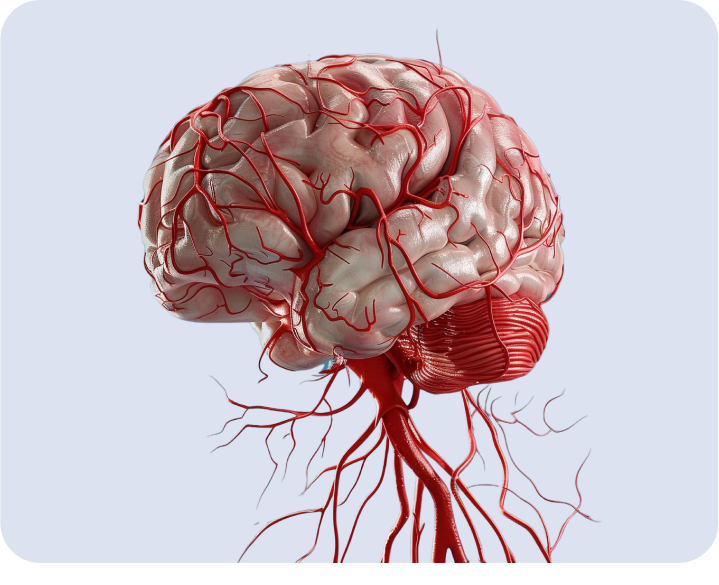Library - Page 12
Registered on ClinicalTrials
Modern criteria for rational diagnosis and treatment of cerebrovascular diseases
Authors:
Butakova Yu.S. , Zhivolupov S.A. , Samartsev I.N.
Place of publication:
Neuronyus, issue No. 10 (36) October 2017
Modern paradigm of rational therapy of strokes
Zhivolupov S.A., Butakova Yu.S., Samartsev I.N.
Department of Nervous Diseases of the Military Medical Academy; Primary vascular branch of the Novodvinsk City Hospital, St. Petersburg, Russia
Place of publication:
Journal of Neurology and Psychiatry, 8, 2016
Mexidol's effectiveness with carotid endarterctomy in patients with stenosis cerebral atherosclerosis
Authors:
Golovkin V.I. , Popova L.O. , Svetlikov A.V. , Shapovalov A.S.
Place of publication:
Journal of Neurology and Psychiatry, 1, 2016
Chronic cerebrovascular failure: description of the clinical case
Authors:
Vakhnina N.V. , Gromova D.O. , Zakharov V.V. , Tarapovskaya A.V.
Place of publication:
Therapeutic archive 4, 2016
The systemic stressful effect of Mexidol in chronic brain ischemia
Authors:
Antipenko E.A.1*, Deryugina A.V. 2*, Gustov A.V.1*
1*GBOU VPO Nizhny Novgorod State Medical Academy of the Ministry of Health of Russia, Nizhny Novgorod;
2*National Research University "Nizhny Novgorod State University named after N.I. Lobachevsky ”, Nizhny Novgorod
Place of publication:
Journal of Neurology and Psychiatry, 4, 2016
Optimization of lipidsiting therapy in patients with ischemic stroke and type 2 diabetes mellitus
Author:
L.A. Shchepanevich, Yu.A. Nikolaev, N.A. Dolgova
FGBNU "Research Institute of Experimental and Clinical Medicine", Novosibirsk
The effectiveness of combined therapy with Mexidol and cerebrolysine of chronic brain ischemia
Authors:
S.V. Berezhnaya 1 , E.Z. Yakupov 2 , Yu.A. Zakharov 3
1 GAUZ "City Polyclinic No. 6" Kazan;
2 GBOU VPO “Kazan State Medical University” of the Ministry of Health of the Russian Federation, Kazan;
3 GBOU VPO “Institute of Physics of Kazan (Volga) Federal University”, Kazan, Russia
The value of atherosclerotic stenizing lesions of the brachiocephalous arteries in the formation of cognitive impairment
Author:
Khasanova D.R., Zhitkova Yu.V., Gasparyan A.A.
Place of publication:
NEUROLOGY. NEUROPSYCHIATRY. Psychosomatics, 2015
The results of the study of the effectiveness and safety of the use of Mexidol in patients with chronic brain ischemia
Author:
E.I. Chukanova, A.S. Chukanova, H.I. Mamaeva
GBOU VPO “Russian National Research Medical University named after N.I. Pirogov ", Moscow
Oxidative stress and its correction for neurological diseases. Review of literature
Author:
A.I. Fedin
GBOU VPO “Russian National Research Medical University named after N.I. Pirogov »Ministry of Health of Russia
Place of publication:
Neurological practice
Issue No. 2 (5) February 2015
Aleksitimiy in patients with a heart attack of left -handed localization in the late recovery period
Authors:
Antonova N.A. , Kuznetsova E.B., Sholomov I.I.
GBOU VPO "Saratov State Medical University named after V.I. Razumovsky "of the Ministry of Health of Russia, the Department of Nervous Diseases
Place of publication:
Journal of Neurology and Psychiatry, 10, 2015
Neurometabolic therapy as a means of secondary prophylaxis of stroke
Author:
V.V. Kovalchuk
St. Petersburg GBUZ City Hospital No. 38 named after N.A. Semashko, St. Petersburg
Oxidative stress and its drug correction by Mexidol with traumatic brain injury
Author:
N.V. Govorov
State Budgetary Educational Institution of Higher Professional Education "Omsk State Medical Academy of the Ministry of Health", Omsk, Russia
The effectiveness of the drug "Mexidol" in patients with a combined traumatic brain injury
Authors:
I.B. Savitskaya, V.V. Nikonov, A.V. Chernov, A.Yu. Pavlenko, A.V. Beletsky
Kharkov Medical Academy of Postgraduate Education, Kharkov City Clinical Hospital of Emergency and Emergency Medical Assistance
Clinical experience in the use of Mexidol to correct astheno-vegetative disorders in patients who have suffered a mild traumatic brain injury
Author:
M.E. Sergienko
Road Clinical Hospital, Chelyabinsk
Features of the influence of Mexidol on the functional state of the central nervous system in patients who have suffered a stroke
Authors:
V.V. Kuznetsov, F.V. Yurchenko
Institute of Gerontology of AMNs of Ukraine, Kyiv
THE INFORMATION IS INTENDED FOR HEALTHCARE AND PHARMACEUTICAL PROFESSIONALS. THIS INFORMATION IS NOT INTENDED AS A SUBSTITUTE FOR MEDICAL ADVICE.
Source of photos and images Shutterstock.com














